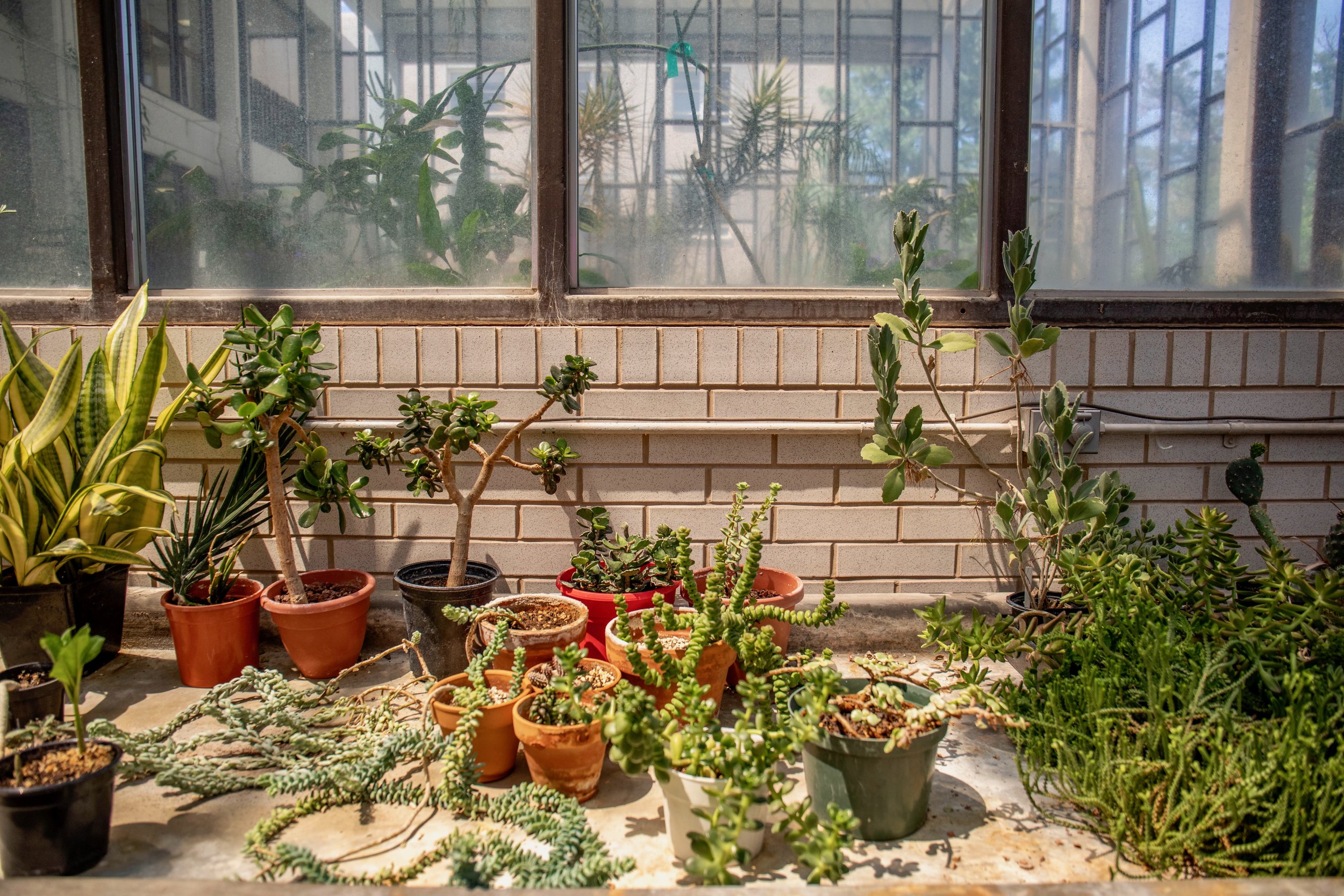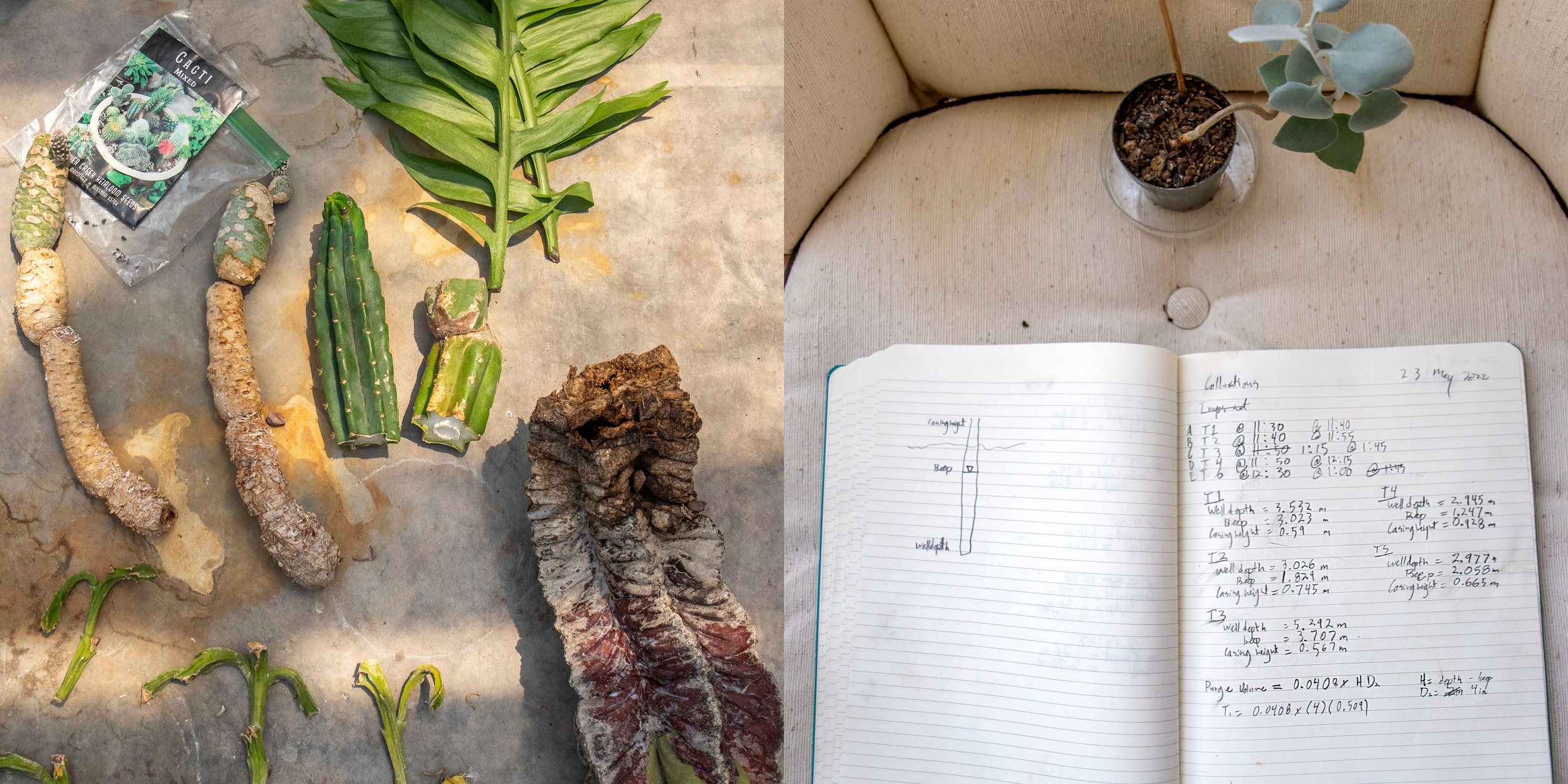Part Six: Watching the oxbow dry
Invasive plants speed the degradation of a rare marsh in a desert city
ALBUQUERQUE, NM—The oxbow, a horseshoe curve of the river that has transformed over time into a marsh, as seen from the San Antonio Bluffs on Albuquerque’s Westside. Consecutive years of drought dried parts of the marshland that are crucial habitats for birds, beavers and other animals. (Photo by Diana Cervantes for Source NM)
Wes Noe, a graduate student in Water Studies at the University of New Mexico, tends to plants in the campus greenhouse. (Photo by Diana Cervantes for Source NM)
“Watching the oxbow dry in 2021, watching blue waters shrink to smaller and smaller patches of brown ground, just muddy patches, cut deep, Noe said.
I’m so deeply connected to the oxbow,” Noe said. “I literally grew up in Albuquerque, and I worked in the Bosque in my undergrad, and never once did I hear about the oxbow.”
Wes Noe checks a Donkey's Tail succulent at the UNM greenhouse. (Photo by Diana Cervantes for Source NM)
Wes Noe cuts back a lemon tree. (Photo by Diana Cervantes for Source NM)
The UNM greenhouse seen beyond the window above a table that doubles as a workbench. (Photo by Diana Cervantes for Source NM)
Wes Noe rests on the banks of the Rio Grande among coyote willow and salt cedar. (Photo by Diana Cervantes for Source NM)
Cottonwood seeds float across the air, borne aloft on summer winds. (Photo by Diana Cervantes for Source NM)
Wes Noe pushes through a thicket of plants, twists of coytoe willow, and invasive plants such as Russian olive and salt cedar. (Photo by Diana Cervantes for Source NM)
Wes Noe checks his traps for beetles, as part of fieldwork examining ground arthropods and groundwater levels in the marsh. (Photo by Diana Cervantes for Source NM)
Assorted cacti line the workbench at UNM’s greenhouses. Some of Wes Noe’s notes examing groundwater depth in the Oxbow. (Photos by Diana Cervantes for Source NM)









